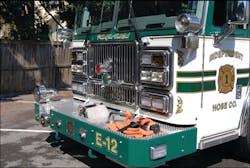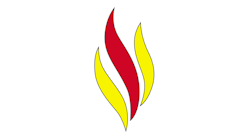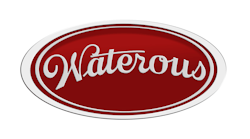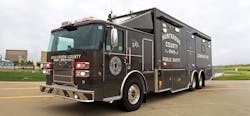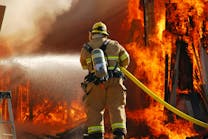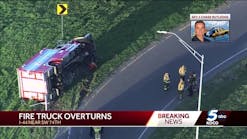While many fire companies may be able to boast about being the first organization to reach specific benchmarks or milestones, few if any can lay claim to being the oldest fire department within an area. The Independent Hose Company of Fredrick, MD, was organized in 1818 and has served the community continuously since that time. Today, the fire company is the oldest volunteer company in the state of Maryland that has served continuously since being formed.
The company was originally chartered as the Fredrick Hose Company and assigned as Company 1 with a green color scheme for its apparatus. Today the Independent Hose Company operates for a four bay station located at 310 Baughman's Ln. in the western portion of the city of Frederick. The company is under the command of Chief Rodney Masser, who oversees a group of 75 active volunteers and 7 career personnel who respond to over 7,000 calls annually.
History Of Innovative Units
The Independent Fire Company has enjoyed a long history of operating innovative apparatus beginning in 1908 when they placed into service a motorized Howe pumper that was the first automotive style type apparatus in Maryland. In 1937 they took delivery of a Seagrave Safety Sedan pumper with fully enclosed bench seating for personnel. This unit served the company until 1954 and then was sold to the Carroll Manor Fire Company in Fredrick County. For a time the company operated a pair of twin Mack L-model canopy cab pumpers that were acquired in 1953 and 1954. These pumpers were very distinctive in their white and green livery with body compartments and extensive gold leaf stripping.
After operating several Mack CF model pumpers acquired in 1972 and 1973 the they again turned to Seagrave Fire Apparatus in 1984 and again in 1988 when they placed into service HB-model pumpers. Finally in 1994 they acquired a Seagrave TB model four-door cab 1,500-gpm pumper as Engine 12.
Today the Independent Hose Company operates a 2006 Pierce Dash as Rescue Engine 11, a 1995 Peterbilt/Four Guys 3,000-gallon engine/tanker as Tanker 1, together with a 2001 Emergency One 95-foot rear-mount tower as Tower 1. In addition they operate two medic units, two brush trucks, an advanced technical rescue unit and several support vehicles.
New Engine 12
The station's newest piece of apparatus is a 2011 Seagrave Marauder II pumper model TB-50-CM and is assigned as Engine 12, replacing the 1994 Seagrave pumper. Engine 12 is built on a 184 1/2-inch wheelbase with an overall length of 31 feet, 1 inch and a bumper extension of 24 inches. The overall height of the apparatus is 118 inches. The apparatus is powered by a Cummins model ISM engine rated at 500-horsepower through an Allison EVS-4000 transmission.
The Waterous CSU single-stage fire pump is rated at 1,500 gpm with a 750-gallon L-shaped water tank which provides for a low rear hosebed. Other major components on the engine include an Onan 15Kw hydraulically driven generator mounted above the water tank together with Fire Research cab and body 120 volt scene lighting.
Cab & Warning Features
The warning light package includes a Whelen Freedom LED forward facing light bar, two Whelen FM mini LED side facing light bars together with twin Mars lights and an LED style roto-ray at the cab front. Whelen 600 series red and clear warning lights are located around the perimeter of the body and cab front with Whelen B6MMRAP LED lights provided at the upper rear body corners.
The stainless steel Marauder II cab provides seating for eight personnel with a Super Vac Command light mounted on top of the raised roof cab. Safety components provided on the engine include a reinforced steel front bumper, cab-mounted down view mirror, 17-inch front disc brakes, rear body mounted back up camera and non-slip inserts located at the back step area.
Engine 12 is equipped with a Hannay booster reel located over the left side fire pump together with a 100-foot trash lines located at the front bumper and the right side pump panel for minor fires. Attack lines include two 200-foot 1 3/4-inch crosslay lines together with a 300-foot 1 3/4-inch and a 200-foot 2 1/2-inch pre-connected lines at the rear hosebed. Other lines include a 200-foot 3-inch pre-connected leader line and a 1,200 feet of 4-inch supply line. The apparatus is provided with both front and rear 5-inch intakes with the rear intake tucked away in the rear step compartment.
Body Construction & Layout
The apparatus carries a 10-foot folding ladder, 14-foot roof ladder, 24-foot extension ladder and two pike poles within an enclosed compartment at the rear body. The body is constructed of stainless steel and has seven lower body and four upper body enclosed compartments. While the body is just 146 inches long by providing for a shorter 28 1/2-inch front body compartment with a 47 1/2-inch wide compartment behind the rear axle the engine was able to maintain a compact wheelbase.
At times the pump panel area can get quite busy and cluttered with intakes, discharges and instrumentation. Seagrave utilized a 48-inch wide pump enclosure which provided sufficient space for a logical arrangement for the controls for each discharge. In addition to the standard color coding, the labeling for each discharge where a pre-connected line was attached utilized the specific name for that line such as "Rear Leader Line" and "Rear 1.75 Attack Line." Small items such as this can make the pump operator's job much easier during the heat of battle when placing multiple lines into service.
The body compartments utilize a number of adjustable shelves, slide-out trays, a hinged tool board and appliance mounting board to properly secure all tools and equipment. As the Independent Hose Company operates a well equipped rescue engine, the tool inventory on Engine 12 was set up to run as a conventional engine company. The body has additional storage space for tools and equipment that may be placed onto the apparatus in the future without having to crowd items within the body interior. The offset hose bed at the rear provides ready access to the attack and supply lines and enables personnel to safely access this area when required.
The apparatus history of the Independent Hose Company is indeed unique with a number of well designed apparatus dating back to their first motorized piece in 1908. The current Engine 12 carries on this long tradition and should provide many years of reliable, safe service to the community and the riding personnel of the company. Appreciation is extended to the crew from the Independent Fire Company who assisted with information on this unit and their apparatus fleet.
- See Tom Live! Tom Shand will be presenting "Fire Apparatus Purchasing: What You Need to Know Before Signing the Contract" and "Engine Companies: The Top 5 Things You Need to Accomplish at All Incidents" at Firehouse Expo, July 19 - 23, in Baltimore. He'll also be recording a live version of "The Apparatus Architects" podcast with Michael Wilbur.
TOM SHAND is a 37-year veteran of the fire service having served with departments in Maryland, Pennsylvania and New York. He has worked in the fire apparatus industry since 1985, including 15 years with Saulsbury Fire Apparatus. He is a contributing editor to Fire Apparatus Journal and Firehouse Magazine and works with Mike Wilbur at Emergency Vehicle Response. He co-hosts the Apparatus Architects podcast with Wilbur, based on their column in Firehouse Magazine.

Tom Shand
TOM SHAND, who is a Firehouse contributing editor, is a 36-year veteran of the fire service. He works with Michael Wilbur at Emergency Vehicle Response, consulting on a variety of fire apparatus and fire department master-planning issues. Shand is a member of the Firehouse Hall of Fame.
